
Branding is a word that seems to have one day—POOF—appeared out of the ether. In fact, when I began blogging in 2006 almost no one in publishing used the term. The rare few who did were hard-pressed to properly/clearly define what a ‘brand’ was.
In fact, many authorities believed authors didn’t need to be bothered with silly passing fads like ‘the Internet’ and ‘social media’ until about 2013. Why would authors need to build a brand?
All a writer needed was a good book. Facebook will last a year at best.
Yep.
Today, in 2018, the words ‘brand’ and ‘branding’ seem to be tossed around daily. Everyone and everything is or has or needs a brand. What’s funny is that branding might seem completely new, yet has been around since…people.
Granted how important a brand is, the need for one as an author, etc. is a fairly recent development. Yes, we need to craft excellent books (product) but we also must begin building our author brand EARLY.
***As in the first day we believe we might one day want to sell a book.
Ah, but calm down. There’s a lot of confusion regarding what a brand actually is. Many assume ads, marketing, and promotional campaigns are ‘branding.’
Yeah…no.
We can build a brand, but alas we cannot buy one. There are no shortcuts. Ads, promotion, marketing can help expand an existing brand, but cannot be substituted for one. This approach is akin to ordering a wife on-line from Russia believing one can buy true love with Visa.
In some areas of life, shortcuts end up a) a waste of time b) a bigger waste of money c) an episode of Dateline.
Branding Basics

I wrote my book Rise of the Machines—Human Authors in a Digital World to be evergreen information. In my POV, social media changes daily, but humans never change.
Just read Shakespeare or look at your ex’s Facebook page *rolls eyes*.
That’s why my social media/branding guide focuses a lot more on the science behind what creates what we recognize as a brand. What captures our attention? What turns us off? What renders a brand invisible (thus a non-brand)?
How can one brand launch into the stratosphere with little to no budget when another fails miserably no matter how many millions of dollars are poured into ad campaigns and celebrity endorsements?
Obviously, my book delves into far more detail about the science behind branding. But a little common sense goes a long way. Thus, today we’ll simply touch on why our everyday on-line behaviors collect into a larger pool we call ‘author brand.’
First…
Branding is NOT New

The thing is, humans have always had a ‘personal brand.’ Branding, in its simplest form, is what descriptors we attach to another person. It’s an innate habit we use to organize and transition the fuzzy and inchoate into the dramatic and memorable.
In the series I’ve been doing about story structure, I’ve reiterated over and over how we humans are wired for story. Branding is simply an extension of story.
That guy/that gal is too amorphous for us to remember. It also doesn’t provide enough detail for us to know how we should respond.
But, ‘That guy who’s been married four times, loves hunting, and collects sports cars’ provides a narrative (a story) that will either resonate or repel depending on the audience.
Humans dig labels, now more than ever before. It’s how we make our increasingly larger world somewhat manageable. Thus, people we ‘know’ are frequently tethered to a variety of descriptors—vegan, sports enthusiast, triathlete, cat lady, Cowboys fan, craftsy person, the comedian, etc.
There’s the perfect, put-together Pinterest moms and then there’s me….
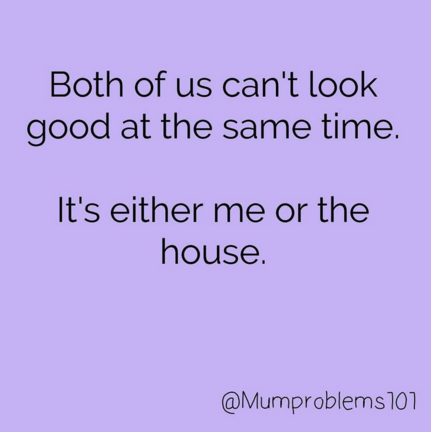
This, in a nutshell, is ‘branding.’ Humans have been doing this ‘branding’ thing since the dawn of time. The only difference in a ‘personal brand’ and an ‘author brand’ is that the ‘author brand’ should eventually drive book sales. Also, branding is now more vital than ever before because of the sheer volume of information, people, choices, etc.
This is why author brands are essential, since a brand is basically a beacon drawing people (readers) to something they find familiar and that they already know they like.
Here is where science comes in handy.
The Neurological Shortcut
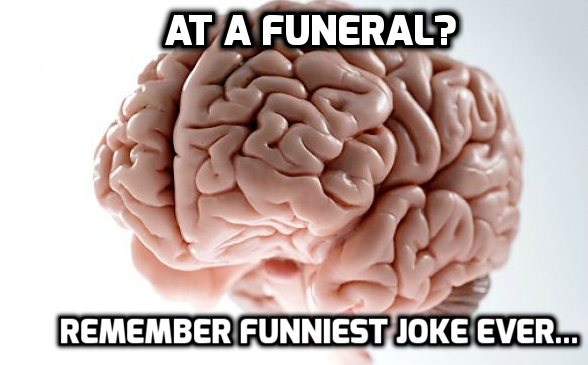
Our brains are remarkable organs that have the ability to adapt to our environment. Before the invention of the written word, our memory centers were far larger because we had to pass down information orally.
In fact, if you took an MRI of a tribesman from some isolated Amazonian tribe, his brain would look and act very different from yours or mine.
Then, with the advent of the written word, our memory centers shrank but we gained even larger areas for abstract thinking. This was around the time we start seeing major explosions in science and engineering.
Now we are in the Digital Age, and we’re bombarded with stimuli. Internet, television, radio, smart phones, pop-ups, etc. etc. We’ve lost our stellar memory centers and our ability to focus for long periods of time and have gained an unprecedented ability to multitask. Our brains must process massive amounts of information faster than ever before.
Think about it. We see ads on Facebook all the time. Or do we? Our brains have literally learned to un-see. We cannot manage all the input. So, if we (authors) are eventually going to advertise our books, how do we make our content visible?
Branding with Intention

Since our brain is much like a computer processor, it must come up with ways to effectively manage all this input in order to maintain efficiency. To do this, it relies on what are called somatic markers.
Somatic markers are neurological shortcuts and are one of the most primitive functions of the brain because they are uniquely tied to survival and procreation. It’s the same shortcut that tells us the stove is hot. We don’t need to sit and ponder the stove. We likely learned when we were very small not to touch.
To give you an idea of how somatic markers work, let’s do a little exercise. Is there a perfume or cologne you can smell and it instantly transports you back in time? Maybe to that first love or even *cringes* that first heartbreak? A song that makes you cry?
Perhaps there is a food you once ate that made you sick and even though there is no logical reason you shouldn’t eat it now, the mere thought of eating it makes you queasy.
These are somatic markers. When it comes to branding, somatic markers are vital.
The Pepsi Challenge
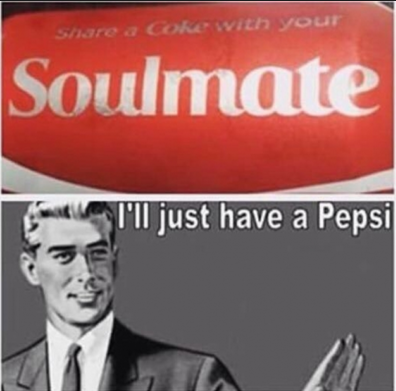
If you are around my age or older you can remember The Pepsi Challenge. For years, Pepsi had been trying to gain an edge over Coca Cola, which had dominated the soda industry for generations. Pepsi—figuring it had nothing to lose—came up with the idea of setting up a table in stores and shopping malls and encouraging people to take a blind taste test.
The results were astonishing…to Pepsi more than anyone.
In a blind taste test, people preferred the taste of Pepsi. Coca Cola was rattled by this news. They performed the same test and it turned out, people preferred the taste of Pepsi…and this led to brilliant ideas like ‘New Coke’ which was one of the most epic brand failures in business history.
Why did New Coke fail?
Coca Cola reformulated to make the drink sweeter. In blind taste tests, New Coke was a clear winner. So then why did it tank so badly?
Somatic markers.
What Happened? Branding Basics
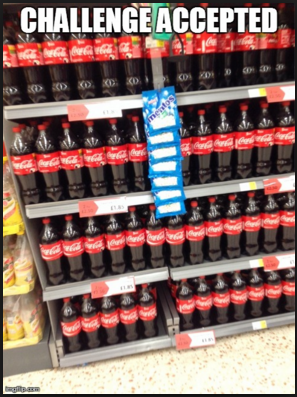
Years later, neuroscientists decided to see if they could demystify what happened in The Pepsi Challenge. They conducted the exact same experiment, only this time they hooked participants up to an fMRI machine so they could witness what areas of the brain lit up.
They held the taste test the same way it was conducted in the 70s—a blind taste test. To their amazement, participants preferred the taste of Pepsi in almost the exact same numbers. According to the fMRI, the ventral putamen, the area of the brain that tells us something tastes yummy, lit up like Vegas.
*Some have speculated that when it is only a sip, people will prefer the sweeter drink.*
The ‘Human Factor’ in Branding
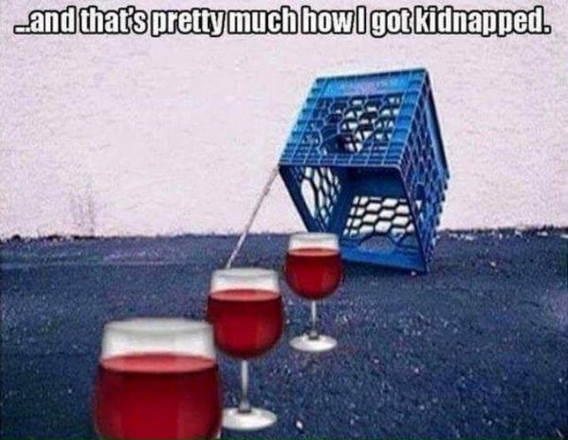
The scientists then decided to try something a bit different. They did the test again, only this time they told the participants what they were drinking. This time, Coca Cola won BIG.
Ah, but something strange happened in the brain. Not only did the ventral putamen light up, but so did the prefrontal cortex, the area of the brain associated with emotion and memory.
See, when it was based on taste alone, Pepsi won. But, when the brands were compared, Coca Cola won. The human brain was in a wrestling match between two very different regions—taste and emotional.
Coca Cola had the advantage because of the vast reservoir of fond memories associated with the brand. In short, Coca Cola had a STORY for sale.
Norman Rockwell Americana, cute polar bears, I’d Like to But the World a Coke, every BBQ, summer vacation, rollerskating parties, Friday nights with pizza and on and on all were part of the Coca Cola arsenal. The fond memories (positive somatic markers) associated with the brand literally changed the taste and gave Coca Cola the winning edge.
Somatic Marker Meets Baader-Meinhof Phenomenon

Ever run into a term you KNOW you’ve never heard in your life, then hear it at least four more times in the next week? Or see something you know you’ve never seen before, then suddenly it’s everywhere? Reverse-harems? Punk-Rockabilly-Zydeco? Kombucha?
I’d never heard of Bikram Yoga until a friend told me about it and then…it was everywhere. Following me with sweaty mats…and Kombucha O_O .
The Baader-Meinhof phenomenon is also known as the frequency illusion or the recency illusion. At first glance, one might think this is why it’s a great idea to automate everywhere! Churn out lots of ads! Exposure! The more people see me, my name, my face, my book, the BETTER!
Not so quickly.
The Baader-Meinhof phenomenon seems to kick in strongest when there’s some kind of an emotional response tethered to the ‘thing.’ Interestingly, the stronger the emotional response (positive or negative), the more likely we will see that car, food, book, name, that we suddenly believe is now everywhere, surrounding us.
Ah, but when it comes to OUR brand, what emotional response are we creating? Are people seeing our name because of some good encounter? Or do they see it and silently rage because we keep crapping up their feeds with automation? Are we all take and no give?
Ads That Pop-Up & Ads That POP
We see ads all over. More than ever before in human history, which is why our brains are getting so clever with shortcuts. Most ads we literally do not see.
I could take any random person and have them click through twenty pages of BuzzFeed memes and they’ll remember the memes (emotional), but are unlikely to remember most of the ads plastered all along the sides. Though most ads will be invisible, some are not. Some might even leap off the page. Why?
What makes us ‘see’ the advertisement?
When we have a highly positive or vastly negative experience, we’re far more likely to notice the ad.

If we see an ad for a book, we may or may not notice. But what about an ad for a book written by someone we know? Someone perhaps we talked to and liked? The ad practically leaps from the page. We might even buy it because we SAW her ad and OMG! I know her!
Ads alone have very little power to compel a purchase. But, couple them with a brand (story/narrative/emotional experience), and the odds of a sale greatly improve. This is why ads and promotion alone do very little to impact sales. Until there is a narrative (emotion) attached to the name?
It’s white noise.
Keeping the ‘Social’ in Social Media

Now that y’all have had a Neuroscience 101 crash course—and I guarantee you will see Baader-Meinhof OR Kombucha at least three times in the next week—let’s get down to what’s most essential. Branding is all story. It’s a collection of emotional experiences that tie our name to some set of descriptors (hopefully positive ones).
Eventually, with love, care and nurturing, followers can become friends and even FANS.
So have fun. Relax. Show up. Be present and engage authentically. Find your tribe and bond. And a great tip for on-line as well as in life?
It is far better to be interested than interesting 😉 .
Feel free to ditch the non-stop jazz hands. It’s all good. Go write more books and enjoy the people you meet along the way.
What Are Your Thoughts?
Do you now feel way better now that you know why you’ve also heard the term ‘reverse harem’ six times in the past week? Feel extra sassy that you know the term ‘Baader-Meinhof phenomenon?’ Are you already planning ways of using this word in everyday conversation?
Does this take some of the pressure off ‘creating an author brand’?
Ready for Book Beast Mode? I Live to Serve…Up Some TRAINING!
For anyone who longs to accelerate their plot skills, I recommend my ON DEMAND Plot Boss: Writing Novels Readers Want to BUY. Two hours of intensive plot training from MOI…delivered right to your computer to watch as much as you like 😀 .
The Art of Character is also now available for ON DEMAND.
And if you’re ready for BOOK BEAST MODE and like saving some cash, you can get both Plot Boss and Art of Character in the Story Boss Bundle (ON DEMAND). Almost FIVE HOURS with me, in your home…lecturing you. It’ll be FUN!
Have to write a query letter or synopsis? Conference season is coming!
Pitch Perfect: Crafting a Query & Synopsis Agents Will Love. Class is April 19th 7-9 EST and $45 for over two hours training y’all how to do the toughest parts of this job.
For more inappropriate laughs—fine, a totally gallows humor but fast-paced mystery suspense—I hope you’ll pick up a copy of my debut novel The Devil’s Dance.
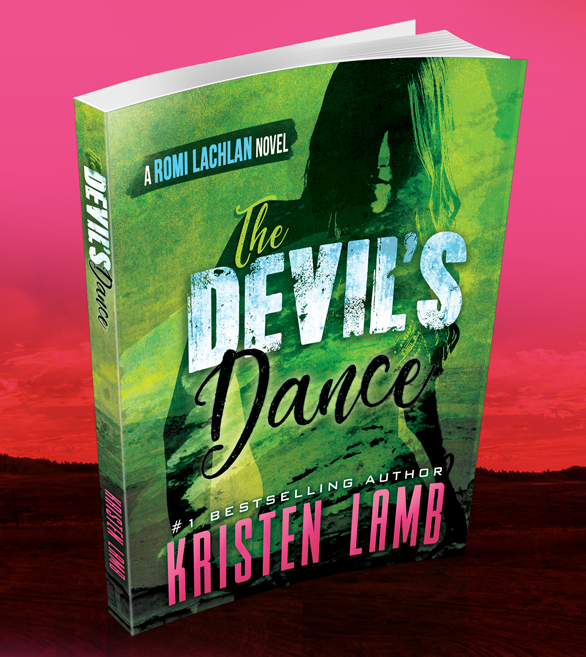
I love hearing from you!
And am not above bribery!
What do you WIN? For the month of April, for everyone who leaves a comment, I will put your name in a hat. If you comment and link back to my blog on your blog, you get your name in the hat twice. What do you win? The unvarnished truth from yours truly. I will pick a winner once a month and it will be a critique of the first 20 pages of your novel, or your query letter, or your synopsis (5 pages or less).
March’s winner will be announced next post. I know I said this post but have been sick and am a writer so I lie 😛 .








14 comments
4 pings
Skip to comment form
Kristen Lamb, You make me cringe, hyperventilate, laugh, and learn in every one of your posts. This post relieved some of my confusion about brands. An author that spoke to one of my writing groups shared her “brand” with us. It consisted of several pink dots scattered around her name. Hmm. I wonder if green dots would work for me. ?
Author
Yeah I have seen some interesting ideas about brand, LOL. She isn’t entirely wrong, that is an element of brand (like font continuity, a color, a logo) but that is not in itself brand.
Author
And I call purple, so green should be cool.
I truly enjoyed your blogpost. I am currently writing a cookbook that will be self-published and I need all the help I can get. Thank you for your insights that will help me deliver my story to the world….
I had to look up reverse-harem… but now I will be on the lookout for it. The word, that is. (Ahem.)
I’ve never really gone in for jazz-handing – makes it too hard to hold a pen. But possibly this is because I am the kind of introvert who would find it easier to break into a stranger’s house by night and leave a tantalizing short story on their kitchen table, than to actually initiate a conversation with them.
I have too many ‘crunchy’ friends to have avoided Kombucha for this long (though some days I wish I had…:).
I appreciate your take on the mystery of branding! I’m not a great salesperson, but just being friendly and around…that’s not so scary. Thanks!
Author
Yep, that is pretty much it. Not so sexy or so terrifying 🙂 . Promotion and ads can help expand that later but in the meantime just have fun….and WRITE.
Well, that explains why I never heard of the keto diet a year ago and now it’s everywhere I turn around. 🙂
Great post as always!
Damn this made so much sense! I was on Twitter the other day and came across a retweet of a tweet about a competition. The retweet was by a friend, but the thing that made me sit up and take notice was that the competition was being run by an author I had just started reading. The fact the name was unusual probably helped, as did the fact that the book was good, but suddenly I was helping this unknown person get their message/brand across. I was kind of surprised at my own reaction. Now it makes sense.
Great post. 🙂
So much info in one post!
I recently purchased your book, Rise of the Machines, Human Authors in a Digital World. I’ve enjoyed it! I plan on using it as a reference in a workshop I’m giving this summer at the SCWC conference. Hopefully it will send others your way.
Thank you for another great post.
Your upcoming classes sound exactly like what I need right now. I’ve read your non-fiction books and they were extremely informative. I read Are You There Blog … a while back, but I read Rise of the Machines pretty recently. You taught me a lot about social media. I was clueless before reading your book. I’m still not doing it exactly like I’m supposed to. Just haven’t found the time between work, family, kids, etc., to dedicate the amount of time Twitter requires for maintaining the personal relationships you advocate. I realize you said it doesn’t really take that much time, so clearly I’m still missing something. I can’t seem to stay connected with each person who follows me, RT, likes or sends me a message in addition to tweeting my own content, RT’s and searching for people I want to follow and learn from. I signed up for Buffer. I know you’re not an advocate of automated tweets. I completely understand that. They do seem rather impersonal, but I’d rather stagger them throughout the day instead of clogging my followers feed all at one time when I finally have a free uninterrupted half hour.
I’m so confused about branding. Often I think I’m on the verge of getting it, but then I read an article or hear someone speak on the topic and I’m lost and back to square one. Here’s my problem: I’m a lawyer (former prosecutor), but I’m not practicing right now. I’m a writer, but not yet published. So what exactly am I marketing? What is my brand? I don’t have books for sale? Not yet anyway. But everything I read encourages pre-published authors to do everything possible to build an audience and platform “prior” to completing their book. Do you agree? But, if I’m not selling a book, what am I selling? What am I offering? Do I offer legal type resources to crime fiction writers — and post blog articles on those specific topics, e.g., crimes, Police, criminal procedure. Police procedure, cop jargon, legal jargon, what a jury trial is like, court rooms, collection of evidence, witness testimony … what happens if you character is suspected of a crime? Is arrested? How to help your villain avoid detection? CSI? Weapons? I have million things I could write about if I ventured down that road, but do enough people (writers, I guess), need that information to warrant blog articles on those topics.
Sorry my comment is so long, but your branding post really resonated with me. I always read your blog. I’ve left a few comments over the years, but I’ve never asked a question, but your latest article touched on an issue I’ve been struggling with and you always give the best advice. One more thing … you’ve always said that we are our brand, like our name is our brand. So if you have an odd or unusual … quirky last name do you try and incorporate the name into your brand? Thank you in advance for any help you can offer. And congratulations of your debut novel, The Devil’s Dance (my favorite genre). I’m going to order its soon as I hit the send button on this way too long comment.
Melissa @Sugar Crime Scene
Twitter @Msugar13
Author
Long comments are fine, LOL. Unusual last names are GOLD in an age of search engines. As far as what are you selling? Nothing. You are networking and creating a dialogue. Gathering your tribe, so to speak, as you write your books. That’s what that cloud is for. The bigger the cloud the more accurate of a profile you have for who YOU are (and your brand) but it also provides a very detailed profile of your audience. What are the conversations you’d have with friends?
This is why I’m such a huge advocate of the blog. A blog plays to a writer’s strengths. Writers WRITE. Also a blog only gets stronger over time. YOU control it. In light of all the recent abuses by social media platforms like Facebook, it only reiterates what I have said for years. NEVER build your platform on something you don’t control. The blog (which should be on our author site) is under OUR control.
Twitter has gotten far harder to network in the way I used to recommend, in large part to so much automation. How can we connect to automated messages? I still hop on once a day or so and scroll to see if there is anyone I can respond to but often find I am talking to no one. It is still useful for research and the hive mind, but bots have ruined a lot of what made it once a really fun place to be.
My advice is to get the on-demand blog class and maybe upgrade to the consult and then I can work with you one-on-one to answer your questions and help you. You are making it too hard is the short answer, but it helps to have someone with outside perspective. Saves a lot of time and mistakes.
Thanks so much for the long and lovely and thoughtful comment and THANK YOU for the support with the books :D. (((HUGS)))
This explains why I mute the commercials when watching TV and return to reading my book until they’re over. Why I scan through what are obviously advertisements and nothing else on social media. It also explains why I will purposely watch some commercials repeatedly and chuckle every time I see them! Thanks for the easy-to-understand explanations of these branding and the brain concepts.
*lightbulb flashes* So all the writers on wattpad I’ve been heling, and making friends with maybie someday might become a fan? (Who knows. I don’t do it for that. It would be interesting if that was a ‘side effect’ later on.)
Just like a writer friend I made on Facebook, where he helped me and now I see a new book of his out and I buy it when I can? Ah! This was really informative, thank you.
[…] https://authorkristenlamb.com/2018/04/branding-brain-science-social-media/ “We can build a brand, but alas we cannot buy one. There are no shortcuts. Ads, promotion, marketing can help expand an existing brand, but cannot be substituted for one. This approach is akin to ordering a wife on-line from Russia believing one can buy true love with Visa.” Making an emotional connection with our brand makes sense. I think it also depends on the author’s approachability. Not saying you have to let everyone into your home, but they might like to get to know your personality and that alone might make them want to read your book. […]
[…] Branding & The Brain: How Social Media Changes but Humans Never Will […]
[…] Sandra Beckwith interviews a guest on how to promote your audiobook, Kristen Lamb explores how social media changes but humans don’t, and Alee King has 16 promotional strategies to grow your Facebook group 3x […]
[…] sell books. Never have and never will. If you are curious why (in detail), check out THIS POST and THIS ONE or grab a copy of my branding […]